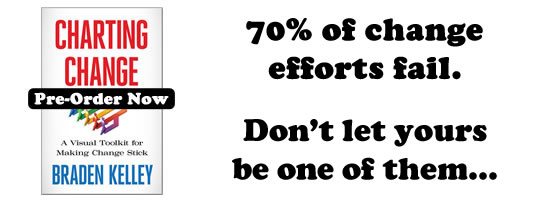The Power of Story

I recently had the opportunity to visit the Institute for Advanced Study, the place where Einstein worked till his death in 1955.  His arrival there was a sort of a tipping point for America—after him the trickle of leading scientists coming from Europe became a flood—and the legend of the place is still very much intertwined with his.
Of course, the Institute is much bigger than one man. Other legends, from von Neumann to Gödel to Kennan, once roamed its halls as well and today hundreds of the world’s greatest minds in fields ranging from anthropology to theoretical physics come to, as Steve Jobs would put it, make a dent in the universe.
Still, while the achievements of the Institute belong to many, its majesty belongs to Einstein alone, which is one of the things that makes it such a special place.  We may live our lives in prose, but it is poetry that we live for.  A compelling story can lead to narrative that inspires a shared sense of mission and sparks a long and great legacy.  That’s the power of story.
s
John Bogle And The Story Of Vanguard
Few stories in business are more powerful than that of John Bogle.  Even as a young man, he was always a high achiever, receiving a scholarship to the prestigious Blair Academy and then a degree from Princeton.  From there he went to work at the Wellington Fund, where he rose through the ranks and became Chairman while still in his early forties.
As his career grew, so did his ambitions.  He engineered a merger with a group of aggressive traders from Boston that had achieved stellar results.  Unfortunately, when the 1973 recession hit, the traders’ performance tanked and Bogle was removed as Chairman.  He was allowed to stay with the company, but for the first time in his life John Bogle was a failure.
It was a humbling experience, but Bogle managed to turn it to his advantage.  It led him to research that showed few, if any, fund managers beat the market over the long term.  So rather than chase the pipe dream of superior returns, he created low-fee index funds that would mirror the market.  Today, Vanguard, the company he founded, is the world’s largest fund manager.
I recently had lunch with someone who works closely with Vanguard.  Having recently seen a documentary about Bogle and Vanguard, he began his presentation to managers there with the story.  Amazingly, although all were aware of the firm’s investment philosophy, none had heard the tale of where it came from.
The Heart Of The Story
Vanguard is a phenomenally successful company and many would argue that as long as the people there do their jobs well, it doesn’t really matter if they know the story of John Bogle or not.  Yet there is a strong case to be made that it does, in fact, matter quite a bit.
As Geoff Colvin explains in his new book, Humans Are Underrated, we are wired for interpersonal connections and put more stock in ideas that result from personal contact than from hard data.  Essentially, we internalize stories much better than we do facts.
As proof he points to research that examined expert testimony in a court case.  The study found that jurors considered experts that had a personal clinical experience far more credible than those that merely offered an analysis of the relevant facts, even if they were shown that a data driven approach is more accurate.  In other words, the jurors needed a story.
Stories are emotional and we are more likely to remember and react to them.  Few can comprehend the work done at the Institute, but many can relate to the story of Einstein.  In the same way, Vanguard’s investment approach is counterintuitive and data driven, but John Bogle’s story is an inspiring tale of the underdog prevailing in a cynical industry.
Story And Narrative
Stories spark interest, which is helpful, but if they are left alone they decay and eventually disappear altogether.  The problem with stories, as John Hagel points out, is that they are self contained—they have a beginning, a middle and an end.  Narratives, on the other hand, are open-ended and invite participation.  They encapsulate an ambition.
The stories of Einstein are legion.  The one about him helping a little girl with her math homework, his friendship with Gödel, etc.  At the Institute, they are often combined with stories about von Neumann’s reckless driving, Oppenheimer’s parties, the wit and wisdom of Freeman Dyson and so on.  There is no shortage of great stories at the Institute.
Yet what makes those stories infinitely more powerful—and more interesting—is the narrative they support.  The Institute is a unique place where great—and often quirky—minds can go and expand the horizons of human knowledge in peace and tranquility.  Their discoveries, often decades later, lead to innovations that change the course of human life.
Here’s where we see the value of the John Bogle story at Vanguard.  An index fund is an powerful idea, but it is closed-ended.  Yet the story of an underdog, fighting for ordinary investors against a legion of arrogant and self serving fund managers has the potential for narrative.  Any one of Vanguard’s thousands of employees can participate in and further it.
A story is an event. Â Yet as part of a larger narrative, it provides the core of a mission.
The Mission Of The Enterprise
We tend to think of strategy as a coolly rational exercise, driven by Excel sheets, PowerPoint decks and hard data analysis. Â Yet this view ignores the fact that enterprises are not mere collections of resources and capabilities, but are made up of people, who are driven by their own ambitions and aspirations.
A job is no more than a set of tasks to be done. Â A mission, however, inspires passion, which enables people to see beyond their daily toil to what can be achieved in the far yonder. Â An enterprise with a common narrative can inspire a shared mission in which everybody looks beyond themselves to work towards a common goal.
Google is devoted to organizing the world’s information and some of the world’s most talented people go there to share that mission.  Apple has taken product design to new heights because everyone there values that particular mission.  Southwest’s remarkable track record is only possible because its people have internalized its low cost mission.
Look at any great enterprise and invariably its mission drives its strategy, not the other way around.  And it all starts with a story.
Wait! Before you go…
Choose how you want the latest innovation content delivered to you:
- Daily — RSS Feed — Email — Twitter — Facebook — Linkedin Today
- Weekly — Email Newsletter — Free Magazine — Linkedin Group
 Greg Satell is a popular speaker and consultant. His first book, Mapping Innovation: A Playbook for Navigating a Disruptive Age, is coming out in 2017. Follow his blog at Digital Tonto or on Twitter @Digital Tonto.
Greg Satell is a popular speaker and consultant. His first book, Mapping Innovation: A Playbook for Navigating a Disruptive Age, is coming out in 2017. Follow his blog at Digital Tonto or on Twitter @Digital Tonto.
NEVER MISS ANOTHER NEWSLETTER!
LATEST BLOGS
Four ways you can ensure employees take accountability for their work
One of the most important driving factors for any successful business is a high-performing team. Having people working for you…
Read MoreWhat is digital upskilling and why is it important?
Photo by Annie Spratt on Unsplash In a world of business that never stands…
Read More


